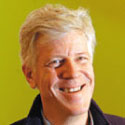Natural Variability In Ocean Salinity

President
Earth and Space Research
Earth and Space Research
Dr. Lagerloef completed a Ph.D. in Physical Oceanography at the University of Washington in 1984. In 1995, he co-founded Earth and Space Research, a non-profit scientific research institute in Seattle where he has developed several research projects devoted to studies of the upper ocean dynamics and climate variability using satellites.
Webinar Clip
While there are many human-induced changes to sea surface salinity occurring in our global ocean, there is also much natural fluctuation. Dr. Lagerloef explains this difference using the well-known El Niño event that occurs off the west coast of South America. The Aquarius satellite, whose goal is to collect global sea surface salinity data from space, is being used to help scientists study the dynamics of El Niño. Using improved data sets will allow for more accurate predictions as to when El Niño might happen and how strong or weak it will be.Full webinar: How Does Understanding Salinity Help Us Understand Climate Change?
Click here for a transcript of this clip (PDF, 35.8 KB). |
Resources
Applicable Science Standards
 Developing and Using Models. A practice of both science and engineering is to use and construct models as helpful tools for representing ideas and explanations. These tools include diagrams, drawings, physical replicas, mathematical representations, analogies, and computer simulations.
Developing and Using Models. A practice of both science and engineering is to use and construct models as helpful tools for representing ideas and explanations. These tools include diagrams, drawings, physical replicas, mathematical representations, analogies, and computer simulations. Constructing Explanations and Designing Solutions. The goal of science is the construction of theories that provide explanatory accounts of the world. A theory becomes accepted when it has multiple lines of empirical evidence and greater explanatory power of phenomena than previous theories.
Constructing Explanations and Designing Solutions. The goal of science is the construction of theories that provide explanatory accounts of the world. A theory becomes accepted when it has multiple lines of empirical evidence and greater explanatory power of phenomena than previous theories.